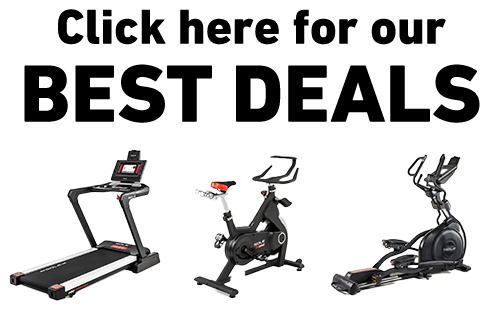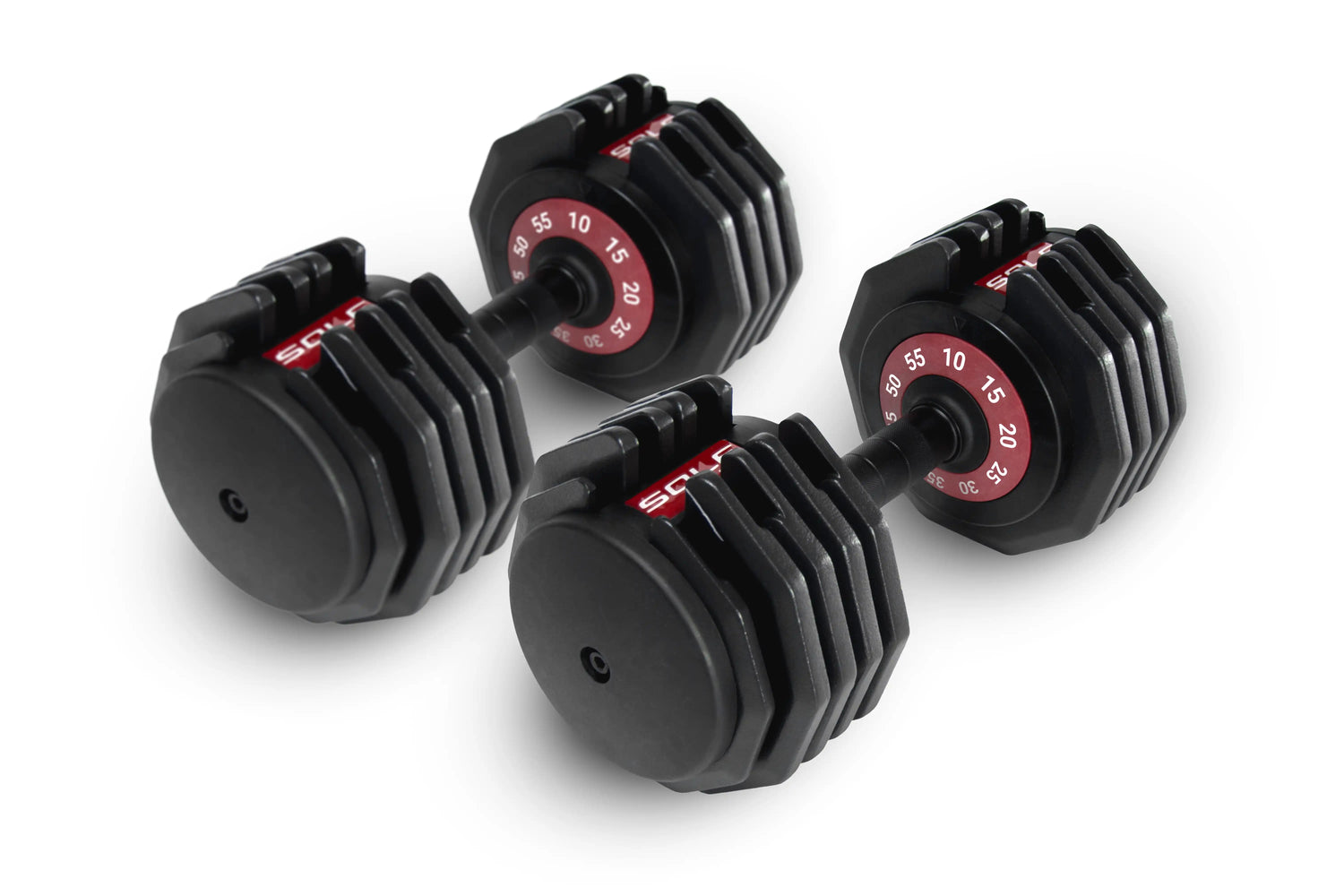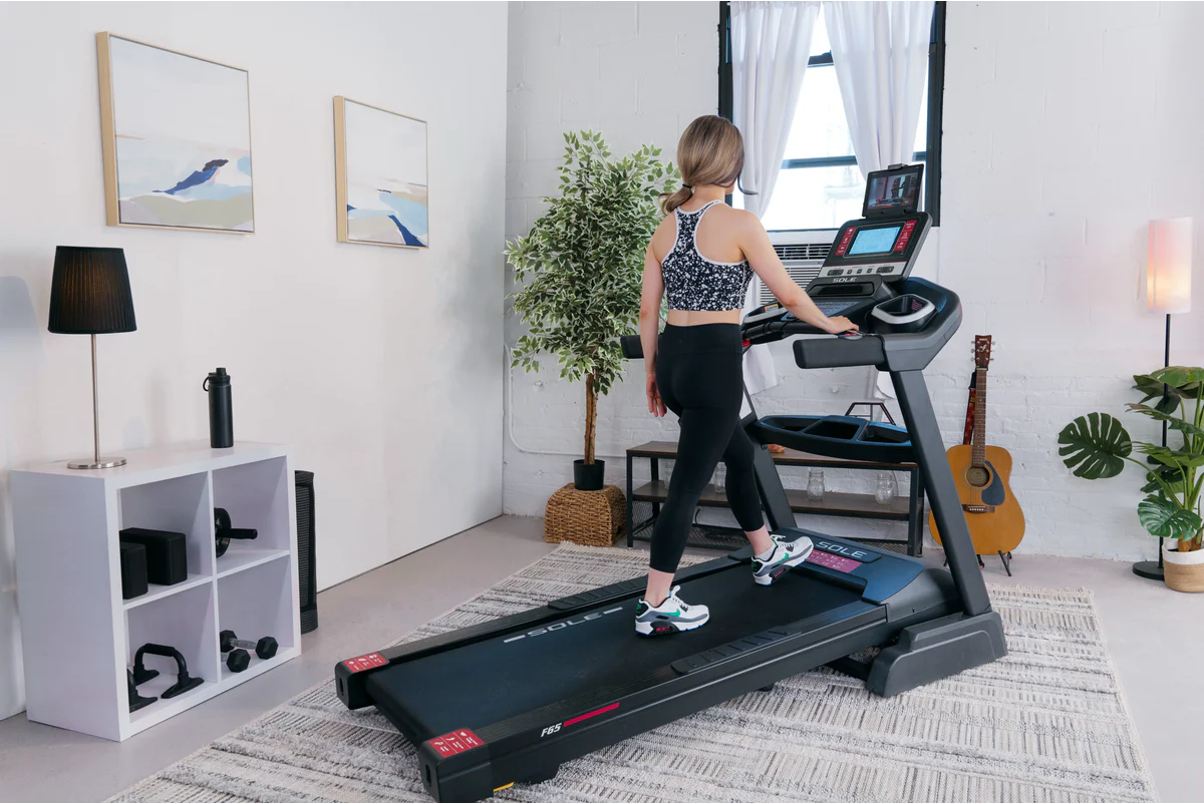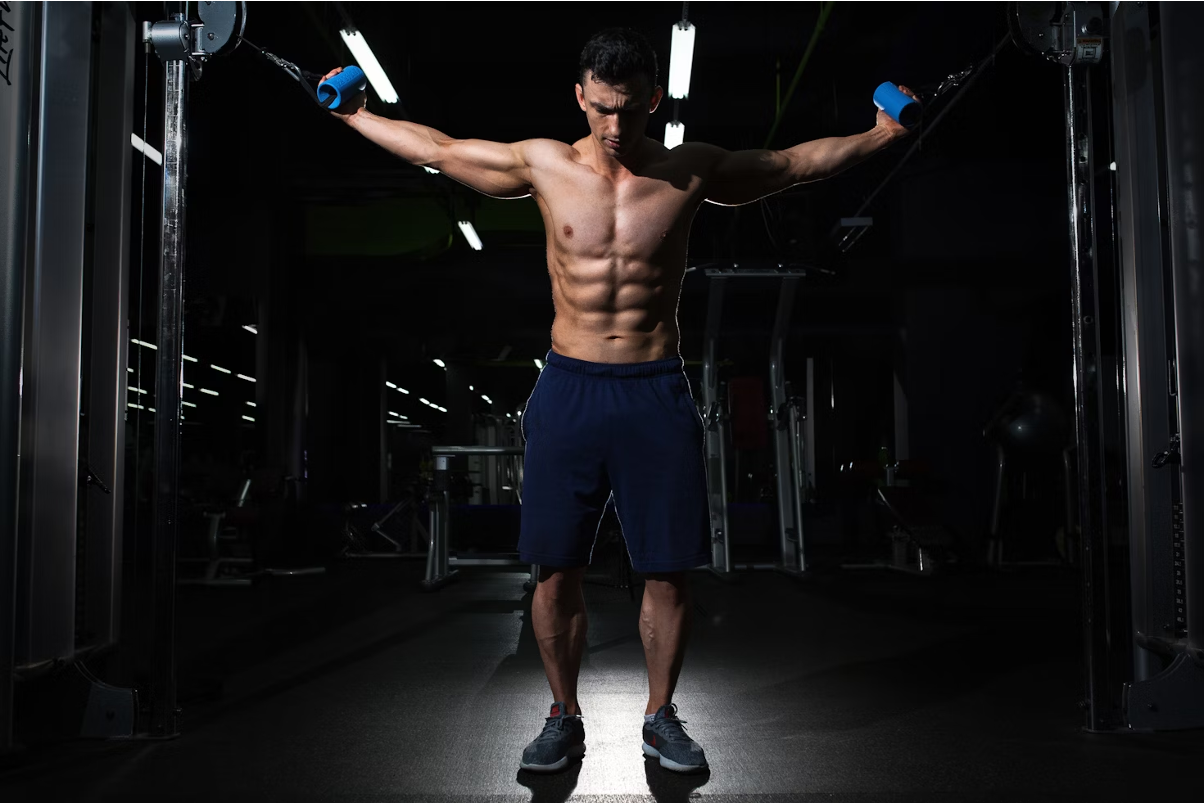Key Takeaways
- Dumbbells provide constant resistance throughout exercises, ideal for building raw strength and stabilizer muscles.
- Resistance bands create variable tension, which increases at end ranges, and offer unique muscle activation patterns.
- Dumbbells may provide greater activation for compound movements; bands excel in rotational exercises.
- Your fitness goals, space, and budget should determine which tool deserves more prominence.
- SOLE adjustable dumbbells provide all the muscle-building advantages of traditional dumbbells.
Dumbbells: The Classic Muscle Builders
Constant Weight Throughout Every Rep
When you curl a 20-pound dumbbell, you're lifting exactly 20 pounds at every point in the movement. This constant resistance makes dumbbells so effective for building raw strength. Your muscles learn to generate force consistently throughout the entire exercise, creating balanced development from start to finish.
This consistent challenge really shines during compound movements like bench press, rows, and squats where multiple muscle groups work together. The predictable resistance lets you focus purely on proper form rather than adjusting to changing tension levels. For beginners, this consistency makes learning movements and tracking progress straightforward.
Easy Progressive Overload
Progressive overload which means gradually increasing the stress on muscles is the foundation of getting stronger. Dumbbells excel here because they offer clear, measurable weight jumps. Moving from 15-pound to 20-pound dumbbells is a precise 33% increase in resistance that you can track and plan for.
This predictable progression makes it easier to follow structured training programs. You can control weight increases of 2.5, 5, or 10 pounds based on your current strength and goals. This measured approach to getting stronger is especially valuable for compound lifts where big weight jumps can ruin your form.
Building Stabilizer Muscles
One of the biggest advantages dumbbells have over other tools is how they develop stabilizer muscles. When you press dumbbells overhead, each arm must control its own weight, using smaller supporting muscles to maintain balance and alignment. This free movement pattern builds not just the main muscles but all the secondary muscles that support joint stability.
The tiny adjustments your body makes during dumbbell exercises create neural adaptations that improve coordination and functional strength. Unlike machines that lock you into fixed paths, dumbbells require your body to control every aspect of the lift. This freedom builds real-world strength that helps outside the gym.
Real-World Strength Transfer
Dumbbell training creates functional strength that directly transfers to daily activities. The free-weight nature of dumbbells mimics how we naturally lift, push, and pull objects in real life.
When you do a dumbbell row, your body learns patterns similar to lifting groceries or moving furniture. This carryover makes dumbbell training valuable for anyone wanting practical fitness improvements.
The coordination developed through dumbbell exercises also improves body awareness and proprioception, your body's ability to sense its position in space.
|
At SOLE, we're proud to offer top-quality exercise equipment designed for home and gym use. Our machines are built to meet the highest standards of durability and performance, making them ideal for fitness enthusiasts at any level. SOLE Products
|
Resistance Bands: The Flexible Challengers
Resistance bands have grown beyond rehab settings to become staples in performance training programs worldwide.
Variable Resistance That Increases at End Ranges
The defining feature of resistance bands is their increasing resistance curve; they get harder to stretch the further you pull them. When doing a bicep curl with bands, the resistance is lightest at the bottom and heaviest at the top.
This resistance pattern actually matches your natural strength curve in many exercises. Most people are stronger at the midpoint of a movement than at full extension. Bands take advantage of this by providing less resistance where you're weakest and more where you're strongest.
This can lead to better muscle fiber recruitment through full ranges of motion and more complete muscle development.
Joint-Friendly Tension for Safer Workouts
The elastic nature of resistance bands creates smoother, more forgiving resistance than the rigid weight of dumbbells. This reduced impact makes bands valuable for those with joint sensitivity or previous injuries. The gradual buildup of tension reduces stress on tendons and ligaments while still challenging the target muscles effectively.
Many physical therapists favor bands because they allow controlled resistance without excessive joint stress. For older fitness enthusiasts or those coming back from injury, this gentler approach maintains training intensity while promoting recovery. Even healthy people benefit from the reduced joint stress during high-volume training phases.
Portability & Space-Saving Benefits
A complete set of resistance bands weighs less than a single dumbbell yet provides resistance equal to an entire rack of weights. A quality band set easily fits in a small bag and can transform any hotel room, park, or living room into a functional gym.
For home gym fans with limited space, bands offer tremendous versatility without needing dedicated storage areas. You can get a full-body workout with a few bands that hang on a simple hook when not in use.
This portability means you can maintain your training routine while traveling or when space is limited.
Multi-Directional Resistance for Better Muscle Recruitment
Unlike dumbbells that only provide resistance in the direction of gravity, bands can create tension in virtually any direction. This multi-angular capability lets you target muscles from novel angles and through functional movement patterns.
By anchoring bands at different heights and positions, you can create resistance that mimics sport-specific movements or daily activities.
This directional flexibility makes bands great for rotational movements and exercises that work muscles through diagonal or transverse planes. Athletes in sports needing multi-directional strength, like tennis, golf, or baseball, often find band training beneficial for sport-specific conditioning.
The Science Behind Muscle Growth With Both Tools
Dumbbells have earned their reputation as the backbone of strength training for good reason.
Muscle Activation Patterns & EMG Studies
EMG studies measuring muscle electrical activity show different activation patterns between bands and dumbbells. Research indicates dumbbells produce higher peak muscle activation during compound movements like chest presses and squats.
The stability requirements and constant loading of dumbbells use more motor units throughout primary and stabilizing muscles.
Bands often show superior activation at end ranges of motion and during certain pulling movements. In fact, band pull-aparts activated the rear delts and rhomboids very effectively.
These differences suggest each tool may excel at developing different aspects of muscular fitness.
Time Under Tension: Why It Matters
Both tools create different time-under-tension experiences that impact muscle growth. Dumbbells create consistent tension through the midrange but often allow "rest" at the bottom of exercises like presses and curls. Bands maintain tension throughout the entire range, even at the bottom position, preventing complete muscle relaxation during sets.
This constant tension from bands can trigger greater metabolic stress, one of the three main ways muscles grow alongside mechanical tension and muscle damage.
The continuous tension increases local blood occlusion, metabolite accumulation, and cellular swelling, all factors that contribute to muscle growth. For building muscle, this makes bands especially effective for higher-rep, metabolic-focused training
Progressive Overload Methods With Each Tool
While dumbbells offer straightforward progression through weight increases, bands require more creative approaches.
With bands, you can progress by using thicker bands, shortening the band length, combining multiple bands, or adjusting tempo and rest periods. These varied progression methods stimulate muscles differently than the linear weight increases of dumbbells.
Dumbbells excel at building absolute strength through heavier loads, while bands develop strength endurance, power, and muscular control through their variable resistance patterns.
Dumbbells vs Resistance Bands Comparison Table
|
Feature |
Dumbbells |
Resistance Bands |
|
Resistance Type |
Constant weight throughout movement |
Variable (increases as band stretches) |
|
Progressive Overload |
Simple weight increases (2.5–10 lb jumps) |
Requires creativity (thicker bands, shorter length, combinations) |
|
Muscle Activation |
Higher peak activation in compound movements |
Superior activation at end ranges and pulling movements |
|
Stabilizer Engagement |
Excellent (free movement pattern) |
Moderate (depends on exercise) |
|
Joint Impact |
Higher stress on joints |
Joint-friendly, smoother resistance |
|
Portability |
Heavy, requires storage space |
Lightweight, travel-friendly |
|
Cost |
$50–500+ for set |
$20–100 for complete set |
|
Space Required |
Rack or significant storage |
Minimal (hangs on hook) |
|
Direction of Resistance |
Gravity-dependent (downward) |
Multi-directional (any angle) |
Get the Best of Both Worlds with SOLE's Premium Equipment
SOLE's adjustable dumbbells give you everything dumbbells excel at while solving their biggest drawback: space and cost.
The SW180 replaces an entire rack of fixed weights with one compact set that adjusts from 5–80 pounds. That's 16 different weight options perfect for everything from light lateral raises to heavy goblet squats. Unlike resistance bands where progression gets complicated, you know exactly how much weight you're lifting and can increase it in precise increments as you get stronger.
What really sets SOLE apart is the build quality. These aren't those cheap adjustable dumbbells that feel wobbly and unbalanced. The weight distribution is perfectly centered at every setting, so you can focus on muscle engagement instead of fighting unstable equipment. The ergonomic handles reduce grip fatigue during longer sets—something bands can't match when the handles dig into your hands.
For a complete setup, add the SW116 Weight Bench to unlock dozens more exercises. With 9 adjustable backrest positions and 5 seat positions, you can target muscles from angles that resistance bands simply can't match. Plus, the SOLE+ app provides expert-guided workouts specifically designed for dumbbell training—no subscription required.
Frequently Asked Questions (FAQ)
Do dumbbells build muscle faster than resistance bands?
For most people, especially beginners and intermediates, dumbbells may produce slightly faster strength and size gains primarily because they make progressive overload more straightforward to implement and track.
The fixed, consistent resistance of dumbbells allows for heavier absolute loads, particularly on compound movements, which can accelerate initial strength development.
Which option is safer for beginners?
Resistance bands generally offer a safer entry point for complete beginners due to their reduced impact on joints, self-limiting resistance (bands become harder to stretch the further you pull), and decreased risk of injury from dropped weights. The gradual ramping of tension also makes it difficult to overload the beginning ranges of motion where technique errors are most common.
That said, light dumbbells with proper instruction are also very safe for beginners. The choice should consider the individual's coordination, joint health, and access to qualified instruction. Many fitness professionals start clients with bands for initial movement pattern development before introducing dumbbells for progressive loading.
How heavy should my dumbbells be for muscle growth?
The ideal dumbbell weight varies by exercise and strength level, but for muscle growth, you need weights that challenge you in the 6–15 rep range. For upper body exercises, most men benefit from dumbbells from 10–50 pounds, while most women use 5–30 pounds.
For lower body exercises, heavier weights are needed, often 1.5–2x your upper body weights. Rather than buying a single pair, consider adjustable dumbbells or several pairs for different exercises and progression.
Should I invest in SOLE dumbbells or just stick with resistance bands since they're cheaper?
This is one of those "you get what you pay for" situations. Sure, resistance bands are cheaper upfront. But here's what nobody talks about: bands wear out, snap, and lose resistance over time. SOLE dumbbells? They're basically buy-once-for-life equipment.
More importantly, think about your long-term goals. Bands are great for certain things, like travel, rehab work, and adding variety. But if you want to build serious muscle and strength, dumbbells are unmatched. With the SW180s going from 5–80 pounds, you've got room to grow for years. Try progressive overloading with bands when you're already using the thickest ones—it gets complicated real fast.




Leave a comment
This site is protected by hCaptcha and the hCaptcha Privacy Policy and Terms of Service apply.